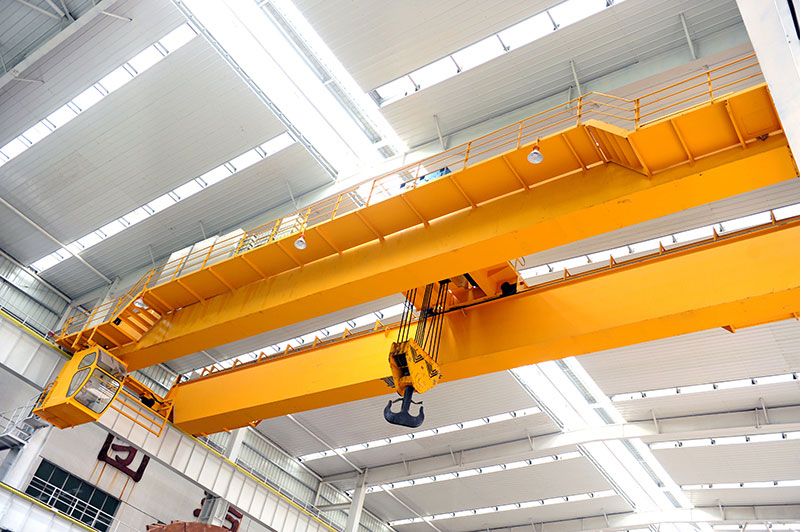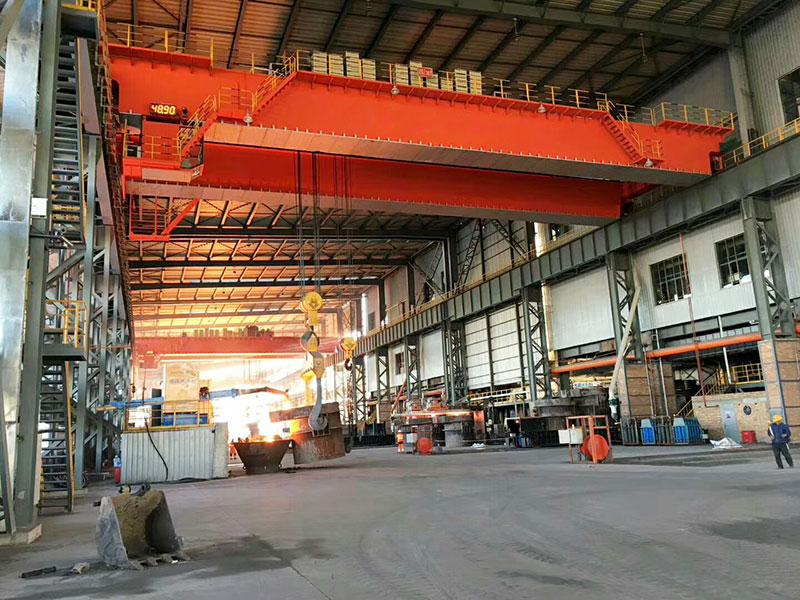When operating in industries that require heavy-duty lifting, such as manufacturing, construction, shipbuilding, and steel mills, a bridge crane is often a crucial piece of equipment. A 100-ton bridge crane, in particular, offers significant lifting power that can enhance efficiency and productivity. However, the decision to invest in such a large-scale crane requires a thorough cost-benefit analysis to ensure that the investment will provide adequate returns.
In this article, we will explore the financial aspects of purchasing and maintaining a 100-ton bridge crane, including the associated costs, expected benefits, and how businesses can assess the overall value of such an investment.

Understanding the Costs Involved
Investing in a 100-ton bridge crane involves several direct and indirect costs, which need to be accounted for to evaluate the financial impact accurately.
1. Initial Purchase Cost
The primary cost when investing in a 100-ton bridge crane is the purchase price. The price varies based on several factors, including the crane’s design (single girder or double girder), type of control systems (manual, remote, or automated), features (e.g., adjustable speeds, anti-sway systems), and whether it’s a standard or custom-built crane.
On average, a 100-ton bridge crane can cost anywhere between $100,000 and $500,000, depending on the overhead crane model, manufacturer, and features. Specialized cranes designed for specific environments, such as those used in hazardous areas or extreme temperatures, may incur additional costs.
2. Installation and Setup Costs
The installation of a 100-ton bridge crane is another significant expense. This includes the costs for labor, rigging, and structural modifications to accommodate the crane. Installing such a large crane requires professional installation teams, including electricians and engineers, to ensure that the equipment is set up correctly and safely.
Installation costs can range from $50,000 to $100,000, depending on the complexity of the installation and the location of the facility. Additionally, if new infrastructure needs to be built (e.g., crane runway tracks, overhead structures), these costs must also be considered.
3. Ongoing Maintenance and Operational Costs
Once a 100-ton bridge crane is in operation, ongoing maintenance and operational costs must be factored into the cost-benefit analysis. Regular maintenance ensures the crane operates at peak efficiency and extends its lifespan. Common maintenance activities include lubricating moving parts, inspecting electrical systems, and replacing worn-out components.
The operational costs of running a 100-ton bridge crane involve electricity or fuel (in the case of hydraulic systems), as well as the labor costs associated with crane operators and maintenance personnel. Training costs for operators should also be considered, as safe and efficient crane operation requires specialized knowledge and certification.
Maintenance and operational costs typically range from 2% to 5% of the crane’s total cost annually, depending on usage, load handling frequency, and maintenance schedules.

4. Downtime and Productivity Loss
Another hidden cost that businesses should consider is the potential for downtime caused by equipment failure or needed repairs. When a 100-ton bridge crane is out of operation, it can disrupt production schedules, leading to productivity losses. This is particularly problematic for industries with tight production deadlines, such as automotive manufacturing or construction.
Assessing the Benefits of a 100-Ton Bridge Crane
While the costs of purchasing and maintaining a 100-ton bridge crane may seem significant, the benefits it offers can greatly outweigh these expenses. Here are some of the most important benefits of investing in a high-capacity heavy duty bridge crane:
1. Increased Lifting Capacity and Efficiency
A 100-ton bridge crane provides an impressive lifting capacity that can handle extremely heavy loads, which is crucial for industries that deal with large, heavy materials or machinery. By reducing the need for manual lifting and using specialized equipment for the task, businesses can significantly increase their operational efficiency. Tasks that would otherwise require multiple cranes or extensive manpower can be completed with a single piece of equipment.
This increased lifting capacity also allows for greater flexibility in operations, enabling the handling of a wider variety of loads, such as large components, machinery, and raw materials. By improving the efficiency of material handling, businesses can increase throughput, meet deadlines more effectively, and optimize workflow.
2. Enhanced Safety
A 100-ton bridge crane is typically equipped with advanced safety features, such as overload protection, anti-sway systems, and remote control capabilities. These features help reduce the risk of accidents or injuries, which are common in environments where heavy lifting is required. By using a bridge crane to lift and move heavy loads, businesses can ensure that operators are not exposed to dangerous situations, such as the risk of falling objects or handling excessive weights manually.
Additionally, automation and remote controls allow for better control of load movement, improving safety by preventing accidents caused by human error.
3. Long-Term Cost Savings
While the initial investment in a 100-ton bridge crane is high, businesses can experience long-term cost savings by improving productivity and reducing the need for manual labor. As the crane can handle multiple tasks more efficiently, fewer workers may be required to perform lifting tasks. This reduces labor costs and minimizes the risk of worker injuries.
Furthermore, with proper maintenance, a well-built 100-ton bridge crane can last for 20 years or more. The investment made upfront is amortized over this long period, offering good returns in terms of the lifting capacity provided.
4. Improved Workplace Productivity
With faster and more efficient material handling, businesses can streamline their operations and improve their overall productivity. A 100-ton bridge crane can help reduce delays caused by manual lifting, material handling errors, and the need for multiple cranes. This can result in more timely production cycles, faster order fulfillment, and a more efficient supply chain.
5. Potential for Increased Revenue
For businesses that rely on heavy lifting for their core operations, such as shipyards, steel mills, and construction sites, a 100-ton bridge crane can enable them to take on more projects and deliver results more quickly. By enhancing operational efficiency and safety, the crane can contribute to higher customer satisfaction, increased business opportunities, and a competitive edge in the market.
Conclusion
A 100-ton bridge crane is a significant investment, but for many industries that require heavy lifting, the benefits far outweigh the overhead crane costs. By providing greater lifting capacity, enhanced safety, long-term cost savings, and improved productivity, the crane can generate a solid return on investment over time.
However, it’s essential to conduct a detailed cost-benefit analysis to ensure the purchase aligns with business goals. By considering factors such as purchase price, maintenance costs, and the potential productivity gains, businesses can make a well-informed decision that supports their long-term success.
For companies operating in heavy industries, a 100-ton bridge crane is more than just a tool—it’s an investment that can streamline operations, reduce risk, and ultimately contribute to a more profitable and efficient future.